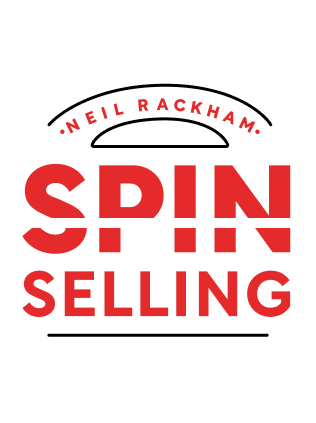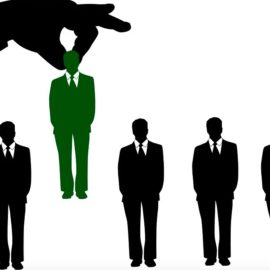

This article is an excerpt from the Shortform summary of "Spin Selling" by Neil Rackham. Shortform has the world's best summaries of books you should be reading.
Like this article? Sign up for a free trial here .
Do you want to know how to close a sale? How does closing a sale different depending on the type of sale?
There are several ways to close a sale. The SPIN selling method not only teaching you how to close a sale, but why it matters. Read about the updated SPIN selling method for how to close a sale.
How to Close a Sale Successfully
Learning how to close a sale is one of the most difficult and valuable skills a salesperson can have. Closing—seeking a commitment from the customer—has long gotten more attention than any other selling skill.
It’s obviously important—if you don’t win sales, you don’t have a business. But all closing isn’t the same. It works differently in small sales than it does in large sales. Traditional closing techniques that may be effective in small sales backfire in large sales.
The adage on closing is that “The ABC of selling is Always Be Closing.” Many books and articles on selling have the word “closing” in the title. Standard techniques for how to close a deal have included these types of closes:
- Assumptive close: Asking questions that assume the customer will buy, although he hasn’t agreed to do so—for example, “When is the best time to schedule installation?”, or “When do you want to start?”
- Alternative close: Asking a question offering several specific alternatives—for instance, “Would you prefer delivery on Wednesday or Thursday?” This is a variation of the assumptive close. Both are based on the “assumption principle” of acting as if the customer has agreed to the sale.
- Standing room only: Pressuring the customer by suggesting that if he doesn’t buy now, he may not be able to buy in the future due to scarcity—for instance, “They’re selling like hot cakes; I don’t know how long our supply will last.”
- Last chance: Stressing that the buyer needs to act immediately because it’s a limited-time offer—for example, “I can’t hold this price for you; it’s increasing next week.”
- Order blank close: The salesperson starts filling out an order blank with the customer’s information, although the customer hasn’t agreed to buy.
Besides these standards, there are hundreds of others, many with catchy names, such as the “puppy dog close,” in which the buyer gets to use the product for a trial period. This is one way to learn how to close deals in sales.
There’s been little disagreement among experts on the importance of how to close a deal.
- J. Douglas Edwards, often referred to as the “father of closing,” contended that it takes an average of five attempts to close a sale successfully. The more closing techniques a seller uses, the more likely she is to succeed.
- Psychologist and author Alan Schoonmaker wrote that successful sales reps close more often, and use more closing techniques, than unsuccessful reps. He claimed sellers should ask for a commitment at least five times before quitting.
- P. Lund, author of Compelling Selling, advised closing—seeking a commitment—as often as possible, even when the buyer isn’t close to committing.
The Research on Closing
In summary, the conventional wisdom on how to close a sale has long been that:
- Using closing techniques correlates with success.
- You should use a variety of closing techniques.
- You should close often during a sales call.
However, in its research on closing success, Huthwaite’s findings went against the conventional wisdom:
- There’s no connection between the number of times a seller closes and obtaining a commitment.
- There’s no evidence linking the five closing attempts to success, or any evidence that sales calls with multiple closes are more successful than calls with fewer closes.
Closing Small Versus Large Sales
The magnitude of the buying decision affects the customer’s response to hard-sell techniques.
With small sales, closing techniques can work. It’s easier for a customer to say yes to a small decision than a large one because, with the latter, the loss is greater if the purchase turns out to be a mistake. Pressure can have a positive effect in nudging the small-sale buyer to a yes. But the larger the decision, the more negatively buyers react to pressure. It’s like asking your date, “My place or yours?” versus presenting a less-consequential decision, such as, “Would you like to sit in a booth or by the windows?”
A small study of a photo store chain that sold both low- and high-priced items showed how hard closing techniques have different effects in small versus larger sales. Hoping to increase overall sales, the store trained its in-store salespeople in closing techniques. After the salespeople were trained on how to close, the store’s sales of low-priced items increased slightly. In contrast, the sales of high-priced items decreased significantly.
Another finding was that the use of closing techniques sped up the transaction for both cheap and expensive items, which is a good thing in small sales—faster sales reduce wait times for customers standing in line. But reducing transaction time undercuts sales of higher-priced items—customers want more time to decide on a larger expenditure, and if the salesperson rushes them, they just walk away and there’s no sale.
Generally speaking, closing techniques become less effective as the purchase price increases.
In another study of 47 sales reps at one company, researchers found that after training in closing, the reps employed closing strategies more often, but their sales success rate decreased by about 10%.
Besides the purchase price, two other factors may contribute to making hard closing techniques less effective in large sales: client sophistication and the ongoing client relationship:
- Research shows that “professional” buyers—purchasing agents and procurement officers—are resistant or even hostile to closing techniques because they don’t like being manipulated.
- Also, closing techniques can sour the ongoing relationship that’s usually part of larger sales. Customers don’t trust, or want to continue working with, a rep who tried to pressure them.
Overemphasis on Closing
One reason that how to close a sale techniques are so heavily emphasized in the sales world may be that many salespeople strongly believe they work, despite research to the contrary.
Psychological research shows that people often continue doing ineffective things in the erroneous belief that they’re effective. They develop that belief when they get a reward for the ineffective behavior. In sales, the only behavior for which there’s sometimes a direct reward is closing (even though other rep behaviors during the call may have led to the order). A few successful closings can imbue the seller with a strong belief in their effectiveness.
But the mixed effectiveness of closing techniques doesn’t mean sales reps shouldn’t try to close, or should wait for the sale to close naturally with the customer deciding to buy without pressure. Calls without closings are failures; however, calls with just one closing—one that gains the right kind of customer commitment without the downside of pressure techniques—are successes. The key is identifying the kind of commitment you need before making the sales call.
How to Close a Sale by Getting the Right Commitment
There’s a right way to know how to close deals in sales. As part of the call planning process for a major sale, the seller needs to set objectives for the call. Objectives may include intangibles like relationship building, but also must specify what level of commitment the customer must make for the call to be a success.
In a small sale, success is easy to define—it’s a customer order. But in a major sale, fewer than 10% of calls result in an order. Your ultimate goal is a sale at some point down the road; in the short term, you’re looking for an indication of progress in each call, which can be tricky to define.
Just meeting vague objectives isn’t a sufficient standard for success. Further, it’s easy to rationalize that you’ve met your objectives—for instance, if you leave feeling good about the meeting, you may count it as a successful closing.
Sales reps need a clear understanding of what constitutes successful and unsuccessful calls, so they can set objectives leading to success. Here are the typical measures of call outcomes:
- Orders: (successful) the customer makes a firm commitment, usually by signing an order form or contract. As noted previously, fewer calls result in orders in larger sales.
- Advances: (successful) the customer commits to an action that moves the sale process toward an eventual commitment—for example, he may agree to test the product, attend a demonstration, or provide access to a higher-level company official. In larger sales, your closing objective is usually to get an advance. This requires knowing ahead of time what advance you want from the call.
- Continuations: (unsuccessful) you get neither a yes or no. The customer says something positive. but doesn’t agree to take any action—for example, he might invite the rep to keep in touch or to stop in again at some unspecified point in the future. Calls that end this way can’t be deemed successes—success requires action.
- Refusals: (unsuccessful) the customer refuses a commitment—for instance, by explicitly saying “no” to the sale, refusing another meeting, or denying access to additional people in the company.
Research shows that when reps are clear about successful and unsuccessful outcomes, they have greater success in converting continuations to advances.
Objectives should focus on getting the customer to take a specific action—for instance, to attend a product demonstration. In contrast, a less specific objective to gather information or build a relationship leads to an indefinite continuation of the sales process rather than to an advance.
Getting Commitment
Beyond setting action-oriented objectives, you need to get the customer’s commitment as you’re learning how to close deals in sales.
Researchers found that successful sales reps use several ways of getting commitment:
1) They focus on investigating and demonstrating value, the second and third stages of a sales call. They take more time investigating—discovering and developing customer needs— than less successful reps do. You have to fully understand the customer’s needs in order to build on them and show that you have the right solution. The rep’s investigating questions help the customer feel a pressing need to purchase the solution—and when the customer wants to buy, there’s no need for closing techniques. That’s one way to know how to close a sale.
2) They check for unanswered questions and concerns. In large sales, the problems or needs and the solution can be complicated. Customers may have questions or need clarification. The reps most successful in getting a commitment ask customers whether there’s anything else they need to address, and then answer the questions.
Sales training sometimes teaches reps to push for commitment and search for how to close a deal despite possible questions or doubts because doing so will surface any remaining questions. However, the concerns customers cite in reaction to a closing technique tend to be hostile—for instance, “I still don’t understand how the lease agreement works; are you trying to hide something by making it so complicated?” When the seller takes the initiative to check for questions, customers respond with simple queries rather than challenges.
3) They summarize the benefits. Calls involving major sales can cover a lot of ground and take considerable time. By the end, the customer will have lost track of key points. So it makes sense to summarize the key points before a decision. In a small sale, a summary probably isn’t needed, but in a major sale, it helps to drive home the benefits and urgency.
4) They propose, rather than ask for, a commitment. Most reps are taught to explicitly ask for an order in the final stage of a call. But instead of asking, the most successful reps tell: they propose or suggest a next step. The proposed action meets two key criteria: it advances the sale, and it’s the most advanced step that’s reasonable for the customer. For instance, a rep might say, “Since we’ve discussed how the new system fixes your speed and reliability problems, may I suggest the next logical step would be a demonstration for your department?”
Learning how to close a sale is a skill that will develop over the course of your sales career. The SPIN selling method is an effective way to know how to close a sale, and will yield exciting results.

———End of Preview———
Like what you just read? Read the rest of the world's best summary of Neil Rackham's "Spin Selling" at Shortform .
Here's what you'll find in our full Spin Selling summary :
- What the SPIN in SPIN Selling stands for
- How to demonstrate real value to the person you're selling to
- How to get commitment from your customer to close the sale fast







Articles that are very good and interesting thanks.